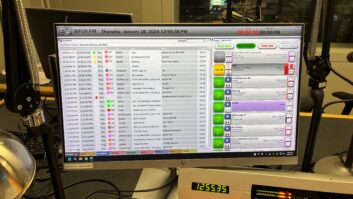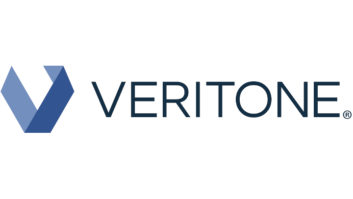What’s New in Program Distribution?
Aug 1, 2012 2:00 AM, By Doug Irwin, CPBE DRB AMD
When network radio first came in to existence, the only means of real-time distribution of audio was the telephone company of course. Obviously there was also the transcription disk; then came tape, then analog satellite, then CDs, then digital satellite, ISDN, and finally the various methods based on IP. Interestingly enough, we’ve kind of come full-circle, because IP is almost wholly done on the wire, just like the old days.
While you can still use satellite distribution of course, and ISDN still exists for the most part, the ubiquitous nature of Ethernet and the Internet make IP distribution worth considering.
Case #1
The first example is that of the Classical Network from WWFM at Mercer County Community College, in Trenton, NJ. In addition to its carriage on WWFM, the Classical Network is distributed to three other full-service FM stations in New Jersey and Pennsylvania: WWNJ Toms River, NJ; WWCJ Cape May, NJ; and WWPJ, Pen Argyl, PA. The Classical Network is also heard via WKCR-HD2 in New York City, as well as WKVP-HD2 in Philadelphia. Mercer also originates a jazz network known as JazzOn2; this network is carried on the HD2 facilities of WWFM, WWPJ and WWCJ.
To distribute the two network feeds, Mercer chose the APT Horizon from Worldcast Systems. This single rack unit is a full-duplex, two channel stereo codec designed to enable real-time transport of broadcast quality audio over IP networks, using linear audio or Enhanced Apt-x coding. A 10Base-T/100Base-TX RJ-45 interface is used for both audio transport and remote control/supervision. Network quality of service is provided using DiffServ (though keep in mind that QoS must be supported end-to-end on the network to truly take advantage of this feature). Some other nice features of the Horizon are its available audio bandwidth: 10Hz up to 24kHz (obviously dependent upon the algorithm chosen); four optically coupled GPIO inputs, and seven relay-closure outputs; event alarm and logging; and support for SIP and SDP, which means you can communicate with other manufacturers’ codecs as long as they’re N/ACIP compliant.
The WWFM studios have access to the public Internet through two separate ISPs: Comcast and Verizon. Software from Radware is used to ensure the streams continue make it to the public Internet, even in the event of a failure of either of those two connections.
WWCJ and WWPJ each have their own unicast stream served by the Horizon used for JazzOn2. The Horizon used to encode the Classical Network is working a little harder: It serves up unicast streams for WWPJ, WWCJ, WWNJ, the New York City stream, Blue Ridge Cable in the Eastern Pennsylvania region, translator K216FW in Steamboat Springs, CO, as well as the Philadelphia stream.

Worldcast Systems APT Astral
At the far ends, Mercer uses the APT Astral from Worldcast Systems. This 1RU device comes standard with the ability to provide audio bandwidth of 22.5kHz, using algorithms such as linear PCM (16- and 24-bit resolution) as well as Enhanced Apt-x (also 16 or 24-bit resolution). It also supports MPEG Layer 2, Layer3, G.711 and G.722, and it’s N/ACIP compliant. In addition to a serial data path, which could be used for RBDS or PSD (for HD radio), it has eight GPIO inputs and outputs. User configuration of the Astral allows for management of network conditions such as packet size, buffers and QoS.

Worldcast Systems APT Horizon
Mercer has plans to install APT Horizon Nextgen codecs at both the New York and Philadelphia affiliates to the Classical Network. This will allow for the implementation of Surestream, a feature from APT that makes use of two independent (unicast) streams, each carrying the same data, received by two different physical-layer connections on the receive side.
– continued on page 2
What’s New in Program Distribution?
Aug 1, 2012 2:00 AM, By Doug Irwin, CPBE DRB AMD
Case #2
Our next example of network distribution via IP is that of New Jersey Public Radio. This network originates at the studios of New York Public Radio (WNYC AM/FM and WQXR) at 160 Varick Street in New York City. (NJPR is comprised of four of the nine stations that made up the old New Jersey Network, which ceased operations at the end of June 2011.)
NJPR uses what most would consider more traditional means of program distribution for primary links, much of it remaining from the NJN facility; however, alternate links are done via IP, through various link types and equipment.
Stations making up the NJPR network are WNJO Toms River; WNJT Trenton; WNJY Netcong, NJ; and WNJP Sussex, NJ. The primary links to WNJT, WNJY and WNJP are via RF links that remain in place from the NJN days; they originate from Warren, NJ, which is about 16 miles WSW of Manhattan. From Warren, looking northeast, both Netcong and Sussex are served by a 950MHz radio shot. NJPR program makes its way from Warren to Trenton over a TV ICR belonging to New Jersey’s Public Broadcasting Authority.
There are two links from Varick Street to Warren; the primary is a T1-based system, and the alternate link is a unicast stream, over the public Internet, that is encoded by an APT Horizon.

Tieline Bridge-It
Alternate links for NJPR are via the Tieline Bridge-IT. This is a half-width, 1RU full-duplex codec that will encode in linear PCM or by Tieline’s proprietary algorithms such as MusicPlus (which will provide up 22kHz of stereo audio with as little as 96kb/s) and Tieline Music (up to 15kHz of mono audio with 24kb/s). Optionally, the unit is available with Enhanced Apt-x, LC-AAC, HE-AAC version 1 or 2. Tieline’s SmartStream IP software automatically manages jitter buffering and forward error correction. The unit can be configured from its front keypad and LCD display, or the Web-based GUI for all programming functionality. It has two GPIO inputs and outputs, as well as RS-232 capability for local and remote control of equipment at either end of your codec link.
One Bridge-IT at Varick Street encodes three separate unicast streams; one for Trenton, one for Netcong, and one for Sussex. A second Bridge-IT at Warren encodes an alternate stream for WNJO in Toms River as main link from New York. Each transmitter site uses a Bridge-IT for decoding of the unicast streams.
NJPR uses the Tieline Codec Management System as well. With this, it can remotely change the configurations of all the Bridge-Its so if for some reason the multi-unicast server at Varick Street fails, NJPR can reprogram the network so the unit in Warren will now become the multi-unicast server, and redirect all the receive Bridge-Its to look at Warren instead of New York.
The WNJP transmitter site in Sussex was a bit more of a challenge to the engineering staff of NJPR. There are no last mile wire or fiber lines to that transmitter site; so, DSL was installed at the facilities of WSUS in Franklin, NJ, (where there is line-of-site to the transmitter) and the group put its own 5.8GHz radio link in for the last mile. This radio is made by AvaLan and operates as an Ethernet bridge.
– continued on page 3
What’s New in Program Distribution?
Aug 1, 2012 2:00 AM, By Doug Irwin, CPBE DRB AMD
About IP Multicast
Our prior two examples of network distribution used multiple unicast streams over IP networks. This is fine if you intend to serve a limited number of clients from one encoder; but what happens when you want to serve dozens, hundreds, or even thousands of clients from one source? The typical resources of a radio station, or network, would not support that, and clearly, it seems that there must be a better way. And, there is: It’s known as IP Multicast.
IP unicast is a one-to-one connection between client and server (or audio encoder and decoder in this context). Recall that an IP “broadcast” is a message sent out on a LAN segment meant to be read by all hosts on that segment – like an ARP request. An IP multicast message is one meant to be read by some of the hosts on the network – those that have joined a multicast group. Each host that wants to decode messages of a particular group is told to listen for messages that are sent to a particular destination address by the originator. That destination address will be in the multicast range of IP addresses 224.0.1.0 through 238.255.255.255. The Internet Group Management Protocol (IGMP) runs between hosts and their immediately neighboring multicast routers; the mechanisms of the protocol allow a host to inform its local router that it wishes to receive transmissions addressed to a specific multicast group.
So, to make use of IP multicast to distribute network programming, it’s clear that the IP network you intend to use must support multicast from end to end. You would work with your network provider to determine this. Now let’s take a look at a couple of examples where this is being done.
Case #3
CKHL (YL Country) and CKKX (KIX 106, hot AC format) each have multiple transmitters located at six separate sites near Peace River, AB (about 250 miles northwest of Edmonton). The end-to-end physical links are wireless, and the local ISP is Wispernet. (Wispernet is built on top of the wider facilities of Alberta Supernet, which you might find interesting in and of itself.) The handoff at each location is a Layer-2 switch providing a 100BaseT connection.

Musicam SipriMax
The encoder used for both the county and hot AC formats is the single rack unit SupriMax from Musicam USA. This is a modular system, and it can support up to four IP audio modules. The modules themselves are derived from the Suprima line; they can generate multicast (as in our current example) or unicast streams. The integral Ethernet port (per module) is used for both the stream output and management. Each module can be controlled via a Web browser, or the CCS management software (which allows for simultaneous control of multiple Musicam codecs). Each module has stereo analog input/output connectors by way of a DB15 connector; AES inputs/outputs by way of a DB9. The card comes with the following algorithms: PCM, G.722, Musicam MPEG1/2 Layer II/III, MPEG2/4 AAC LC, MPEG4 AAC LD, and Apt-x (Standard and Enhanced 16, 20 and 24 bits). The unit will pass RS-232 data up to 9600 baud, and includes four configurable GPIO inputs/outputs. It has a jitter buffer that will correct for up to 500ms of jitter in the IP connection; the frame size is configurable to give flexibility when adjusting the delay and bandwidth used; and it comes with a test tool that allows the user to check bandwidth, delay and jitter of the connection. This information can be used to adjust the streaming parameters and so on, to obtain the best quality in the real-time audio reception.

Musicam Suprima
At the far ends, Musicam Suprima codecs are used to decode the multicast streams, delivering the program audio for subsequent transmission.
Scalability – a system’s potential to grow in terms of the number of users, but without a change in its basic architecture – is very evident in our next and final example.
– continued on page 4
What’s New in Program Distribution?
Aug 1, 2012 2:00 AM, By Doug Irwin, CPBE DRB AMD
Case #4
In 2010, Rick Hunt, the VP and director of radio engineering for Entravision, started looking for a replacement for their legacy SCPC satellite distribution system. Entravision already had AT&T MPLS circuits between their Los Angeles facility and each of their local markets; these were used to move commercial audio content in addition to accounting and sales information, among other things.
Late in 2010, Hunt started testing IP multicast with the Comrex Access on the Entravision MPLS network; by the middle of 2011, he began operating the MPLS distribution in parallel with the satellite network. By the end of last year, the new system had proven itself; Entravision was able to terminate their satellite contract then, saving the company several hundred thousand dollars in yearly operating expense.
Comrex Access (rack mount) units are used to originate the multicast streams from Los Angeles. This is a 1RU, full-duplex codec with a single Ethernet port (used for both streaming and management). In addition, with the appropriate physical-layer interfaces, it will work over 802.11b, g or n Wi-Fi, and 3G or 4G cellular networks such as EVDO, UMTS, WiMax and LTE. Codec algorithms available for use with Access are Comrex’s proprietary BRIC HQ1, HQ2, and ULB (ultra-low bitrate). Linear, FLAC, G.722, G.711, AAC, HE-AAC, HE-AACv2, AAC-LD and AAC-ELD are also included. The Access has line-level XLR balanced analog inputs and outputs, as well as AES3 balanced XLR ins/outs. GPIO access for four remote contact closures is available via a DB9 connector on the rear apron.
The Comrex BRIC-Link is used by Entravision on the receive end of the IP multicast streams. This is a 1RU, half-width full-duplex codec, using 1/4″ TRS connectors for balanced line-level audio inputs/outputs. (AES inputs/outputs use the same connectors.) It has a single Ethernet port, used for the streaming and management; GPIO is available via a mini-DIN, as is the serial port. The power supply is an external unit. The included codec algorithms are linear, FLAC, AAC, HE-AAC and HE-AACv2, G.711 and G.722.
Entravision distributes multiple networks to more than 70 stations via IP Multicast; these include the Tricolor Network; the Maria Network, the Jose Network, and specialty programs such as “Contacto Directo con Jenni Rivera” and “El Vacilon del Mandril,” among others. The standard data rate for the streams is 160kb/s, AAC, stereo. According to Hunt, the audio quality far exceeds that of the old SCPC network.
Entravision also distributes programs to affiliate stations by way of multiple-unicast streams. These connections are made via their ISPs in Los Angeles (they have two — one is available as an immediate backup to the main). The affiliates use all kinds of Internet services, even DSL, to receive programming.
Whether you have put together an ad-hoc network of a half dozen ISDN codecs to distribute a morning show, or if you distribute 24/7/365 programming streams, or something in between, it’s probably worth your while to learn more about this technology. It may provide a useful alternative for your current operation, now or sometime in the future.
Irwin is transmission systems supervisor for Clear Channel NYC and chief engineer of WKTU, New York. Contact him at [email protected].
August 2012
ESPN Radio broadcasts the All Star Game, the latest in program distribution, portable PAs, and Field Reports on Adobe Audition CS6 and the RDL HR-MCP2….












